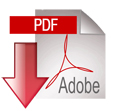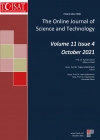TOJSAT - Volume 5 - Issue 3 - July 2015
 Activity Based Costing Application in Turkish Hardcoal Authority
Activity Based Costing Application in Turkish Hardcoal Authority Halim Akbulut, Mehmet Pekkaya, Hakan Vargün, Cumhur Açıkgöz
Abstract: As result of the growing competition and changing production structure, traditional cost systems are not adequate any more. In this study, it is aimed to review the feasibility of activity based costing (ABC) system - one of the modern costing systems - for a coal enterprise. In this context, case study was conducted via the selected enterprise. Results obtained from the research are as follows: First of all, due to not including the cost proportion of sales /marketing and general administrative expenses to inventoriable costs calculated in the enterprise of application, inventoriable costs were lower in traditional costing system compared to ABC system. The most important reason for that is, in the accounting system of Turkey, even if operating expenses belong to that production period, it is considered as a non-production expense and added to operating accounts instead of stock accounts.
 An Audio Data Encryption with Single and Double Dimension Discrete-Time Chaotic Systems
An Audio Data Encryption with Single and Double Dimension Discrete-Time Chaotic Systems Akif Akgül, Sezgin Kaçar, İhsan Pehlivan
Abstract: In this article, a study on increasing security of audio data encryption with single and double dimension discrete-time chaotic systems was carried out and application and security analyses were executed. Audio data samples of both mono and stereo types were encrypted. In the application here, single and double dimension discrete-time chaotic systems were used. In order to enhance security during encryption, a different method was applied by also using a non-linear function. In the chaos based application realized with the method developed, analyses results were achieved with common security analyses such as key space, key sensitivity, chaos effect and histogram. Several examinations on the safety of chaotic systems in the application were carried out with these analyses results.
 Business in Sustainability – a European Perspective
Business in Sustainability – a European Perspective Arnold Pabian, Felicjan Bylok, Piotr Tomski
Abstract: Modern business consumes most of the world’s nonrenewable resources – it is to a considerable extent responsible for environmental pollution and contributes to deepening of some social pathologies. Increasing global ecological and social problems deteriorate the health of the Earth, threatening the existence of future generations. The response to these adverse trends is sustainable business - a new current, developing in the world in the field of sustainable science. In the paper the authors present their own model conception of business in sustainability. A special feature of this conception is moving sustainability from peripheries of business to its centre – replacement of unsustainable resources and activities with their sustainable equivalents. The authors also discuss the necessity for creation of such conceptions and barriers to their implementation in business practice. The ideas presented in the paper have been set in the realities of the European Union, which has significant achievements in sustainable development.
 Evaluation of Consumer Confidence Index of Central Bank of Turkey Consumer Tendency Survey
Evaluation of Consumer Confidence Index of Central Bank of Turkey Consumer Tendency Survey Derya Karagöz, Serpil Aktaş
Abstract: Consumer confidence index is an indicator used to measure consumer confidence based on the degree of optimism on economy. Basically. it is a measure that reveals how optimistic or pessimistic consumers are with respect to the economy in the near future. The consumer confidence index calculated from the survey results can take value between 0-200. Consumer confidence index greater than 100 indicates an optimistic outlook for consumer confidence. Consumer confidence index is smaller than 100 represents the worst case. In this paper. consumer confidence index data are collected for the periods 2004-2012 from Central Bank of Turkey and analyzed using repeated measures analysis to investigate whether there is a trend throughout the years..
 Experimental Investigation Of Heat Transfer In A Rectangular Channel With Perforated Ribs
Experimental Investigation Of Heat Transfer In A Rectangular Channel With Perforated Ribs Mehmet Eren, Sinan Caliskan, Muammer Zırzakıran
Abstract: Ribs are known to enhance the heat transfer between the energy-carrying fluid and the heat transfer surfaces. One effect of surface roughness is to increase momentum transfer and flow resistance. An experimental investigation of forced convection heat transfer in a rectangular channel with perforated ribs is presented. Measurements are carried out for a rectangular channel, rib transverse pitch (S) to transverse rib height (e) ratio of S/e=12.0, and a rib height (e) to channel height (H) ratio of e/H= 0.1. The convective fluid was air, and the Reynolds numbers considered for the channel flow case range from 5375 to 36362. The aim of the work was to study the effect of the thermal performance of the ribbed channel. The heat transfer results were obtained using an infrared thermal imaging technique. The heat transfer results of the perforated ribs are compared with those of a smooth plate. The presence of perforated ribs produces higher heat transfer coefficients than the smooth plate surfaces. Results show a 34.1% increase in heat transfer due to the use of ribs. These perforated ribs show a more significant increase in heat transfer coefficient for channel flows.
 Internationalization of New Ventures and the Central Role of The Nascent Entrepreneur
Internationalization of New Ventures and the Central Role of The Nascent Entrepreneur Piotr Tomski, Arnold Pabian, Felicjan Bylok
Abstract: This paper contributes to the understanding of the background conditions of the internationalization of new ventures in the context of entrepreneurial intentions of Polish students’ focused on entering foreign markets. The aim of the study is to examine undergraduates' entrepreneurial intentions concerning international activity on the example of students of Faculty of Management of Czestochowa University of Technology (FoMCUT). The name - international entrepreneurial intentions (IEI) is used for this kind of EI. Various aspects of IEI and additional determinants are discussed in the context of demographic characteristics of the sample. The study aims at the analysis of the symptoms of early internationalization of new ventures created in the future by the students of the Faculty. The conducted research leads to the conclusions concerning the level of IEI of the students of the faculty, which is strictly connected with the science and practice of management and entrepreneurship.
 Segmentation Strategies in Dermoscopy to Follow-up Melanoma: Combined Segmentation Scheme
Segmentation Strategies in Dermoscopy to Follow-up Melanoma: Combined Segmentation Scheme Jorge Pereira, Rui Fonseca-Pinto
Abstract: Image processing techniques constitutes an important tool to improve skin cancer diagnose, whose early detection is still the most relevant prognostic factor. Nowadays, the follow-up of suspicious melanocytic skin lesions using standard protocols is possible after the development of digital image technology, enhancing the early detection strategy of the skin cancer diagnose. The correct selection of the borders in these particular images of skin microscopy is sometimes demanding, as these images possess particular artifacts (hairs and air bubbles).A stable algorithm to segment the border of the lesion is also important when the following up of suspicious melanocytic lesions uses quantitative markers, as accessing the geometry of the growth border, symmetry, area, among others. In this paper a new strategy to segment dermoscopy images is presented by merging two different approaches in image processing, the Empirical Mode Decomposition of the Hilbert- Huang Transform to remove common artifacts, followed by a Local Normalization to improve segmentation.
 The Effect of Magnetic Treatment on Retarding Scaling Deposition
The Effect of Magnetic Treatment on Retarding Scaling Deposition M. A. Salman, M. Safar and G. Al- Nuwaibit
Abstract: The magnetic treatment method has been applied as a scale deposition controlling and/or preventing tool for several decades in the domestic and industrial water systems. However, most of the scientific communities have remained skeptical about the viability of this water treatment method. However, the attention paid to magnetic treatment has increased during the last years as a prevention method. Hence, a literature review was carried out to seek both positive and negative results. However, a review of the available literature is rather confusing. An experimental laboratory study on the effect of magnetic treatment method was conducted at the Kuwait Institute for Scientific Research's (KISR's) Doha Laboratory for reverse osmosis plant to investigate the effect of magnetic treatment in preventing and/or retarding scaling. Thus, the effect of magnetic treatment in retarding calcium carbonate, calcium sulfate and barium sulfate scaling was investigated within two different configurations (open and closed loop) and by using different techniques at ambient temperature. The current paper summarizes the literature survey and expresses the results of experimental work. The results showed that the magnetic treatment was effective in increasing the retention time required for scaling. Nonetheless, further investigation is recommended to optimize magnetic power, flow rate and operating temperature.
 Utilisation of Intelligent Systems in the Economical Evaluation of Transportation Projects
Utilisation of Intelligent Systems in the Economical Evaluation of Transportation Projects Muhammed Emin Cihangir Bağdatlı, Rıfat Akbıyıklı, Aydın Demir
Abstract: Transportation projects are high-cost investments. For this reason in order to perform correct decision making process special approaches and methods have to be used in feasibility analysis. Benefit Cost Analysis (BCA) is a widely used method all over the world and in Turkey for the economical evaluation of the transportation projects. But, the most important disadvantage of this method is the difficulties in predicting the costs, missing and lacking data and the uncertainty in the long-term analysis period risks affecting the results negatively. In order to avoid this risk, protective measures such as sensitivity analysis and probability distributions are used in the traditional benefit – cost analysis. But, in a project where there are high uncertainties and approximate data are present the said methods are becoming insufficient in real-life applications. Especially, the countries with a quickly changing socio-economic structure, for the transportation projects having long-term analysis period there are uncertainties in predicting parameters such as traffic volumes, accident data, time value etc. As a result of all those items the evaluation of the feasibility of the transportation projects is always facing risks of wrong decision-making. Therefore, the need to develop a more sophisticated method eliminating all the uncertainties of the traditional benefit cost analysis becomes evident. This paper, aims to develop a model that will contribute to the traditionally widely used benefit cost analysis in economical evaluation of transport projects by the Turkish State Highway Authority. Through this proposed model it is also aimed to eliminate the missing and uncertain data and wrong estimations in feasibility analyses. As a result the paper is proposing an intelligent system framework, utilising The Fuzzy Cognitive Map for the transportation projects’ benefit cost analysis


